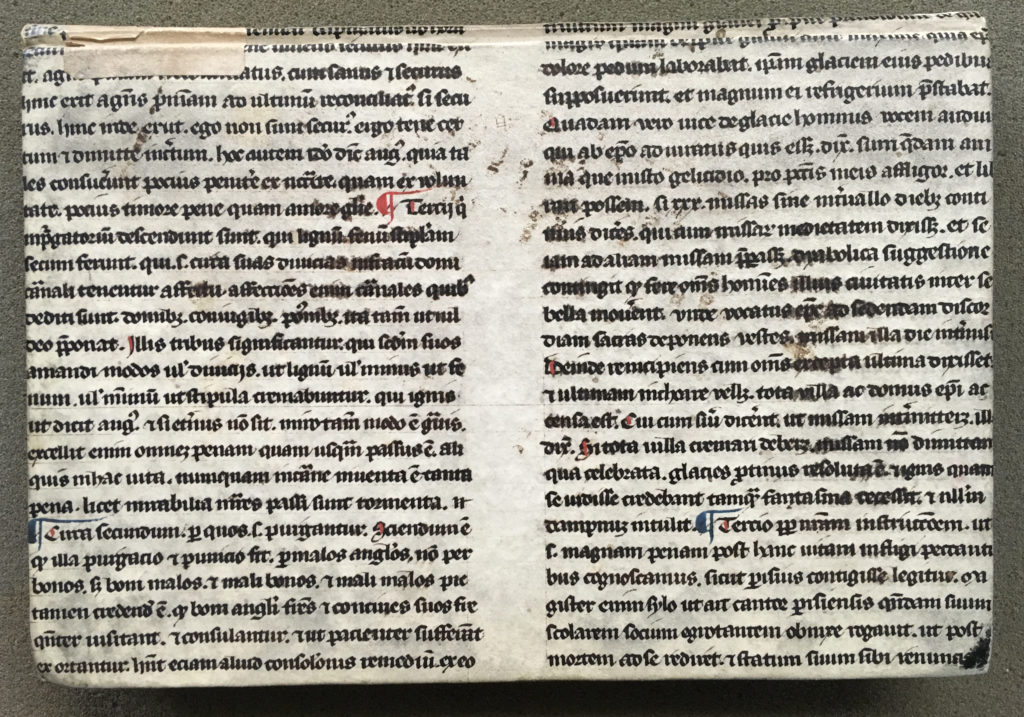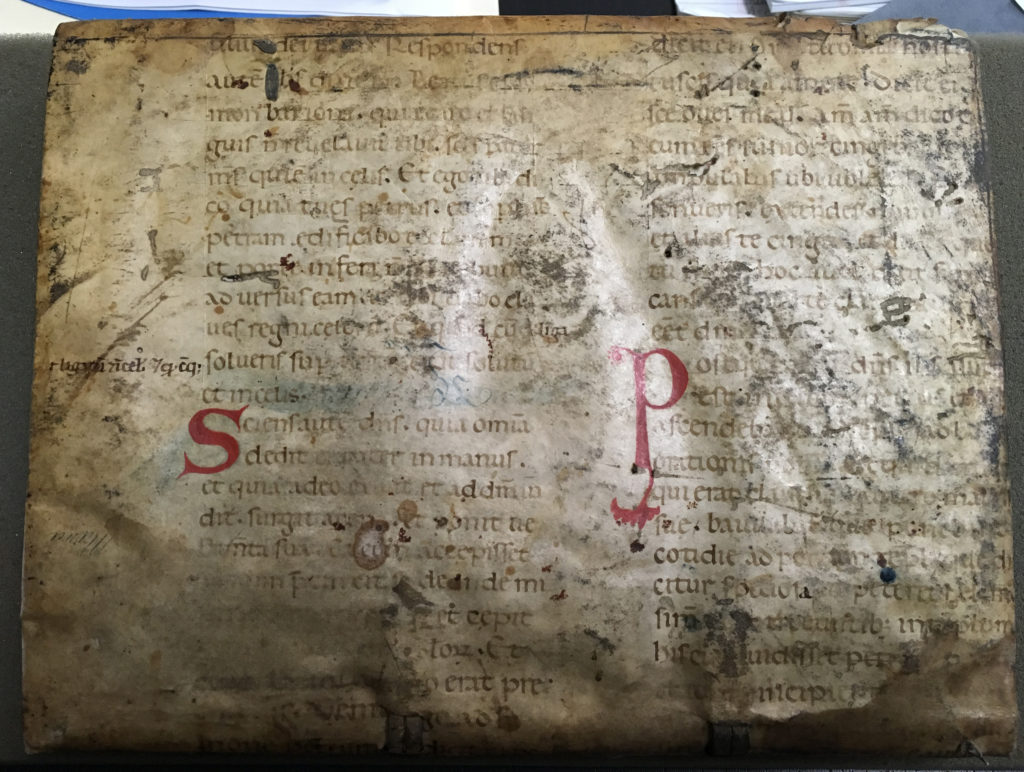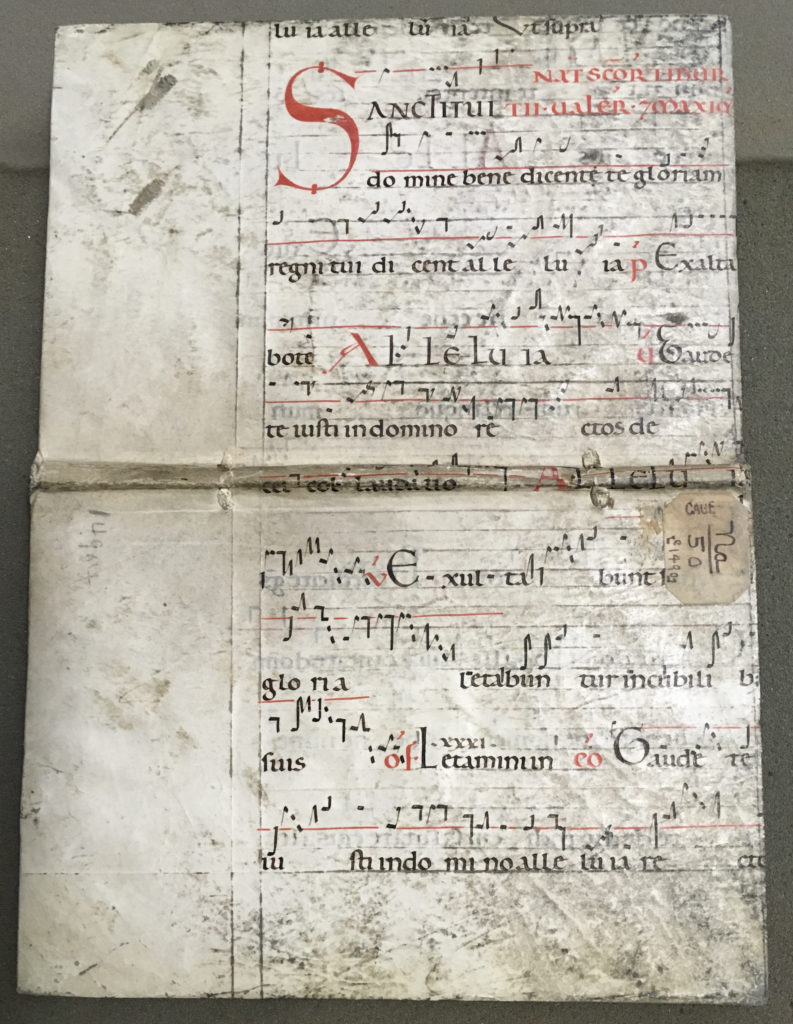This manuscript dates to circa 14th century, based on the script (a Gothic book-hand), and the composition of the actual text.
The volume was catalogued in our system with the note “Bound in a leaf from a medieval Latin ms. (paragraph marks supplied in alternating red and blue, and capital strokes supplied in red) of a religious text on purgatory; over paper boards.” Even without the acknowledging the script, a text referring to purgatory gives us a place to start, as the word purgatorium is believed to have first appeared in the 12th century.



